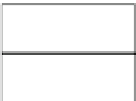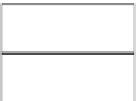Environmental Engineering Reference
In-Depth Information
10 000
30
250
100 %
100 %
100 %
8 000
200
20
6 000
150
43 %
4 000
100
10
25 %
2 000
50
11 %
0
0
0
takeoff
cruise
takeoff
cruise
takeoff
cruise
Cruising a
ltitude
is 10 650 m (34 984 ft), speed is 850 km*h (459 mi*hr )
-1
-1
Fig. 5.4 Comparison of average fuel consumption and emission data in takeoff and cruising of
engine type A310/CF6-80
setting of 7% taxiing (26 min), 30% approaching (4 min), 85% climbing
(2.2 min), and 100% takeoff (0.7 min). Outputs of HC, CO, NO, and NO
2
in g
kg
-1
of the fuel burnt are reported together with the fuel flow. The measured
emissions for all power settings are provided for a variety of engines [
25
].
To control air quality near airports strict directives require the continuous
monitoring of pollutants' concentration with environmental measuring stations.
Recent technology, uses certified measurement instruments in these stations, in the
most cases designed as a measuring container [
26
].
Real emission rates of individual airplanes cannot be accurately estimated with
ground-based measurement. They need on-board experimental technology in air-
planes. Recently, databases have been created from test bench experiments on
airplanes. Merely a few individual airplanes with a specific and a very complete
on-board ''flying'' laboratory present realistic results concerning the fuel con-
sumption and exhaust gas emissions in flight; see Fig.
5.4
[
27
].
There is the highest level of pollutants in the takeoff phase. Other phases of
airplane operation at and near airports, i.e., taxiing, climbing, descenting, and
landing cause less emissions. The air traffic is the origin of approximately 90% of
emissions at airports; see Table
5.2
[
28
].
Exhaust gas emissions at airports have a special meaning for nearby residents,
employees, and passengers. The measurement of individual emission sources at
airports with environmental measuring stations such as measuring containers is not
possible because of influencing factors in the environment.
''Driving behind'' is an uncommon experimental method where a motor vehicle
with measuring instruments, and a sample tube and security plate follows the
airplane on the taxiway; see Fig.
5.5
[
29
].
Despite the relatively small distance between the mobile analyzer in car and the
airplane, the measured concentration strictly depends on the weather conditions.
Experience has shown that substantially higher concentrations can be detected on
calm and cold days than on sunny and windy days.




















Search WWH ::

Custom Search